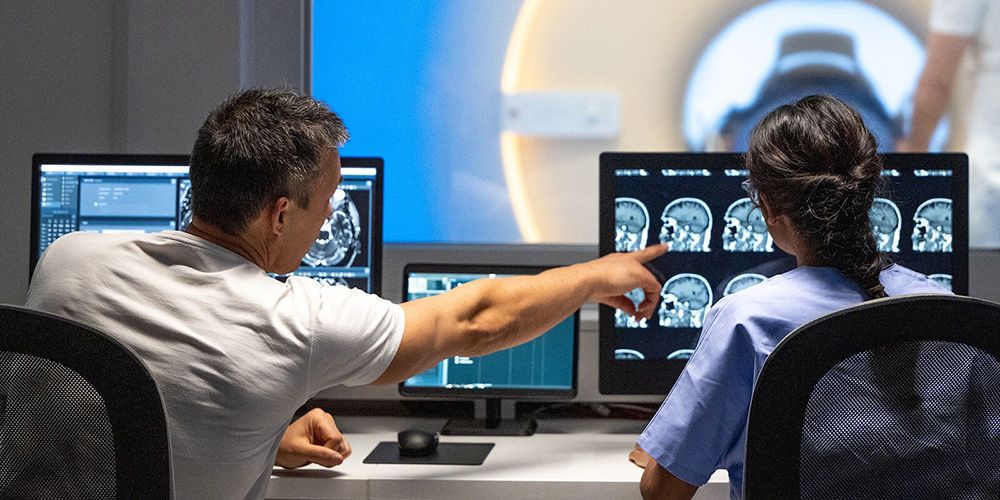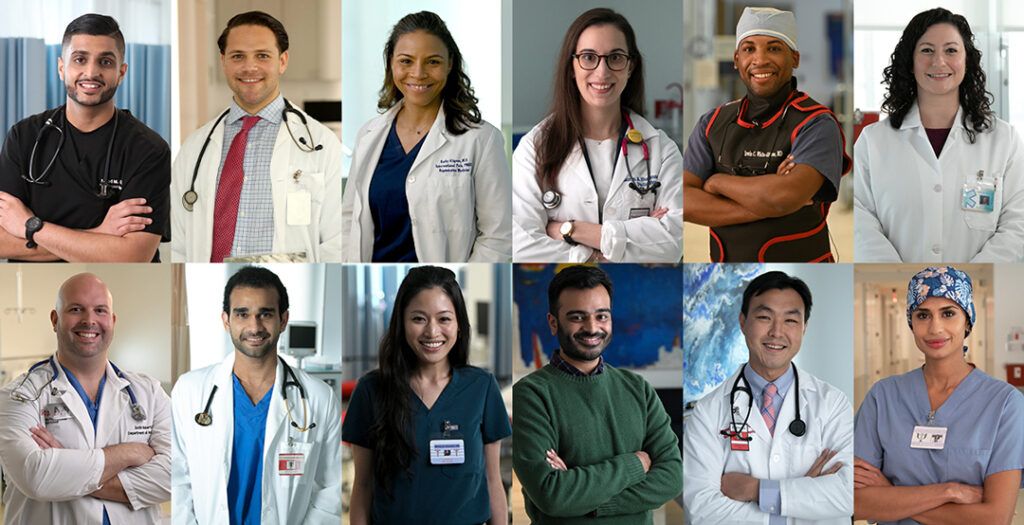Medical school does a good job of exposing soon-to-be physicians to a variety of different areas of practice. But most med students have relatively little exposure to radiology until they’re completing their clinical rotations in their third and fourth years of their Doctor of Medicine (MD) programs.
Once engulfed in the field of radiology, however, students quickly realize how multifaceted the specialization is—it’s much more than just sitting in a dark room analyzing x-rays. Read on for a bit more info on what you can expect from working in radiology and how to become a radiologist.
What do radiologists do?
Radiologists have colloquially been referred to as a “doctor’s doctor.” This is because their primary duty is to act as consultants to clinical colleagues, lending their expertise in using medical imaging technologies such as x-ray, ultrasound, computed tomography (CT), and magnetic resonance imaging (MRI). These practitioners are uniquely trained at interpreting the results, and their insight is often a critical component in forming diagnoses and care plans across specializations.
Physicians in this field can focus on either interventional or diagnostic radiology. There’s really no universal radiologist job description, but there are a number of responsibilities typical for practitioners in this field.
Both interventional and diagnostic radiologists are often responsible for the following:
- Interpreting x-rays and plain film
- Reading MRIs
- Performing diagnostic and therapeutic procedures using catheters
- Interpreting CT scans
- Providing diagnoses to referring physicians
- Training radiologic technologists on how to perform procedures
Once a radiologist is able to provide a concrete diagnosis to a clinical question, next steps—such as surgery, starting a new medication, beginning chemotherapy, and so on—can be mapped out by a patient’s care team.
How to become a radiologist
Aspiring radiologists need to obtain a four-year degree before they can go on to complete medical school. The first two years in an MD program will focus on building a foundation in the basic sciences through lectures and labs. The final two years of med school will focus on beginning the three-part United States Medical Licensing Examination (USMLE) series and gaining applicable experience through clinical rotations.
Toward the end of their MD program, radiology hopefuls will need to apply for residency positions. The postgraduate training for radiology residents entails a preliminary surgical, medical, or transitional intern year. They then focus on radiology (or radiation oncology) for four additional years.
Upon completing residency, radiologists are qualified to obtain board certification. If they’re intending to further specialize—such as pediatric radiology, nuclear radiology, or neuroradiology—there are additional fellowship training opportunities they can pursue.
Plan your path toward becoming a radiologist
Now that you have a better idea of how to become a radiologist, you can start laying the best foundation possible as you earn your MD. From the caliber of the curriculum to the availability of experiential learning opportunities, you likely have a pretty rigorous checklist to guide you when choosing a medical school.
Curious about what criteria you should be looking for? Check out our article “How to Choose a Medical School: 8 Things to Consider.”


